This is the East End in the afternoon, as photographed by newspaper artist Tony Hall in the 1960s while wandering with his camera in the quiet hours between shifts on The Evening News newspaper in Fleet St.
Photographs copyright © Libby Hall
Old men sleeping on a bench in Roman Road.
Two old men discussing something serious.
A grand old house awaiting demolition.
Children playing by a derelict house, and happy to pose for the camera.
Children building a bonfire on wasteland, probably for Guy Fawkes’ Night.
Market Stall lit up in fading light.
A young housewife posing on her doorstep.
A much older housewife also on her doorstep.
A small boy wrapped up for the cold weather.
An elderly woman outside some tenement flats.
Scrap dealers still using a horse and cart.
Children playing in an abandoned wrecked car.


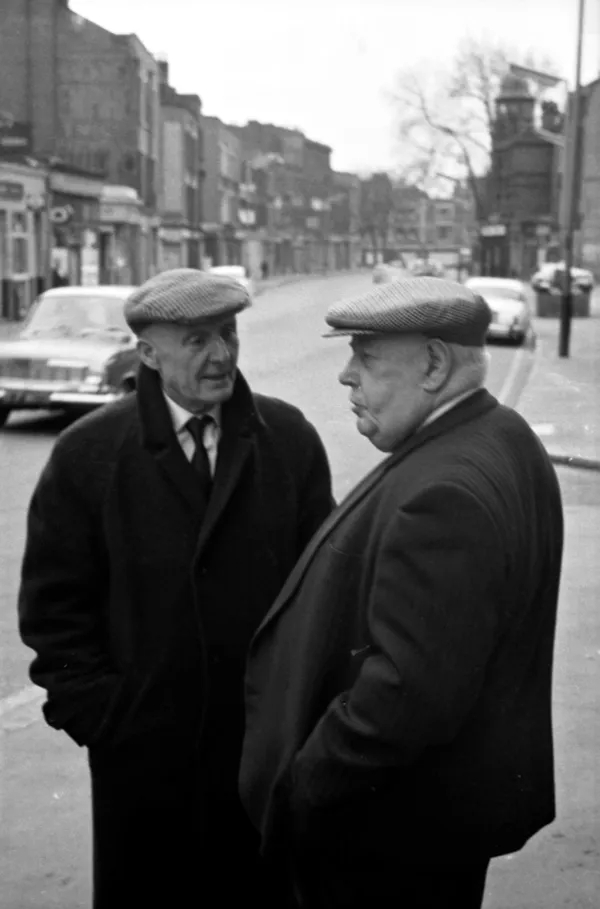

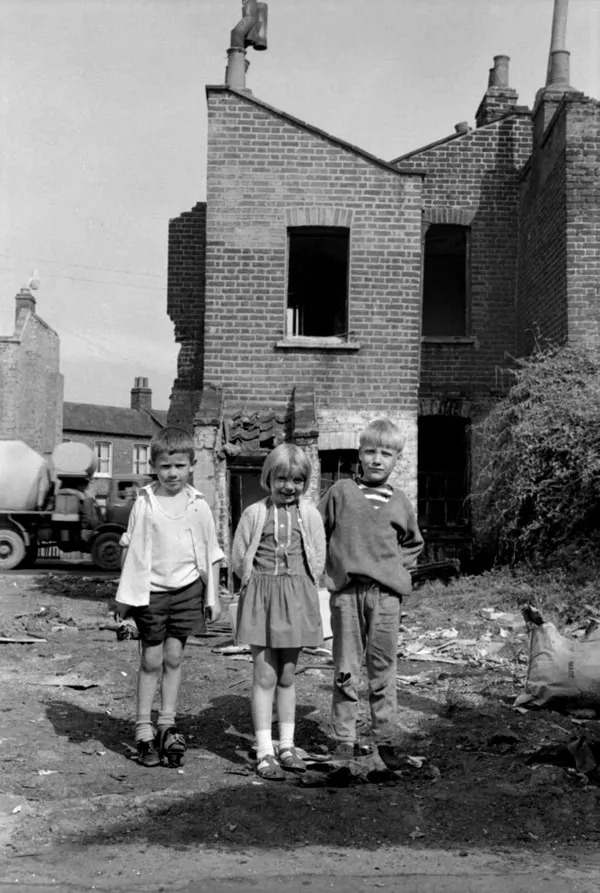

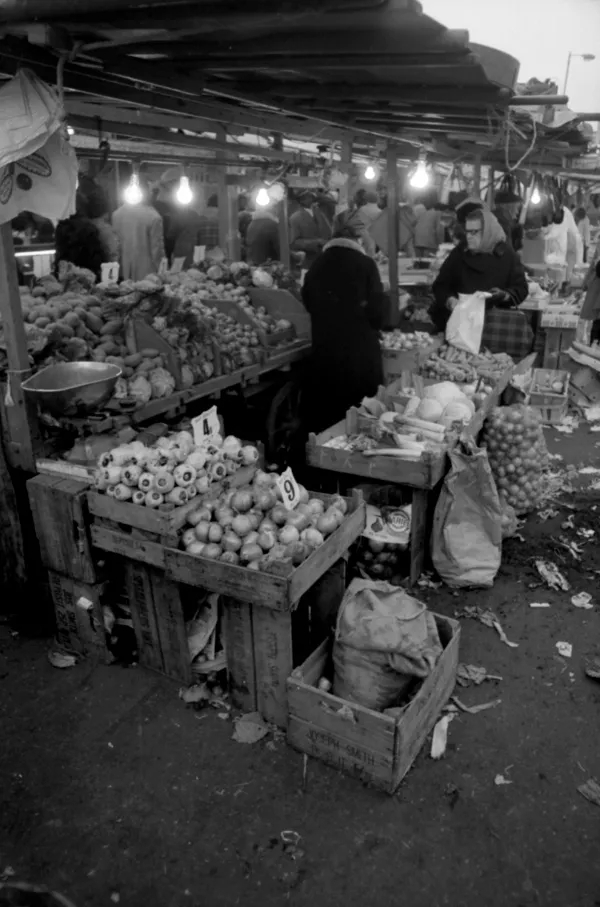
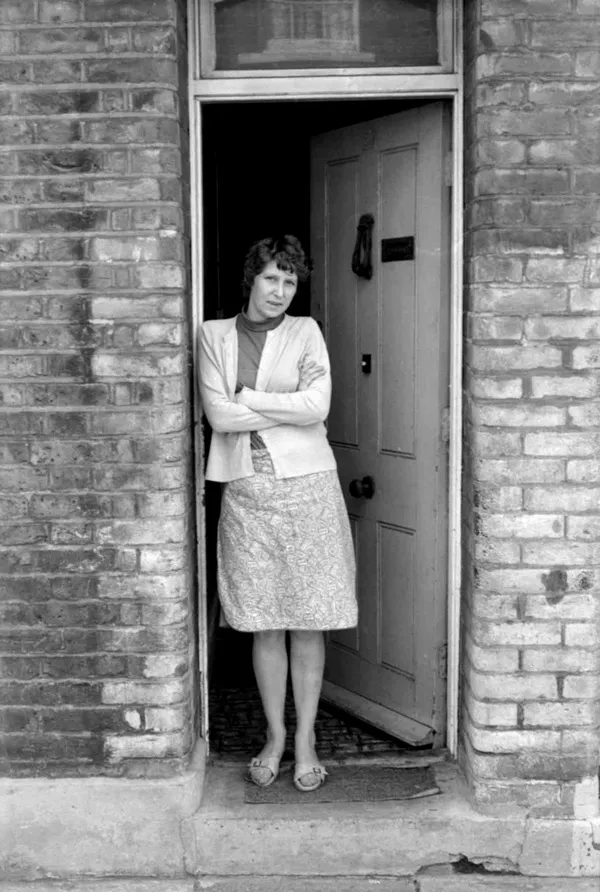
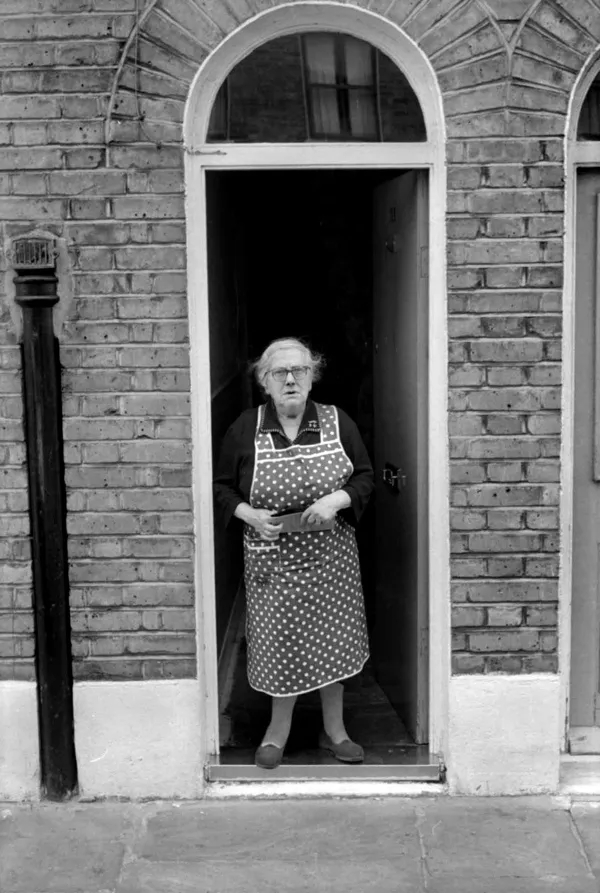
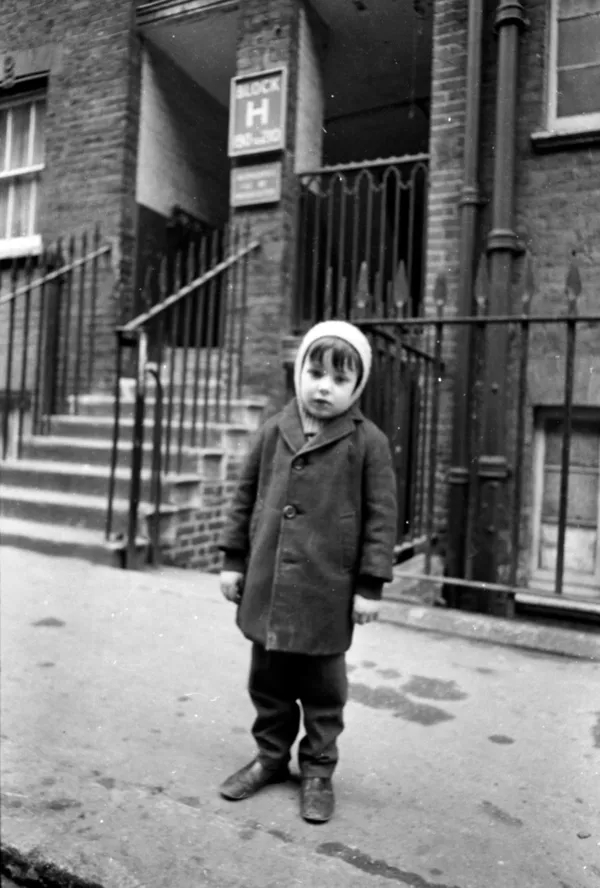

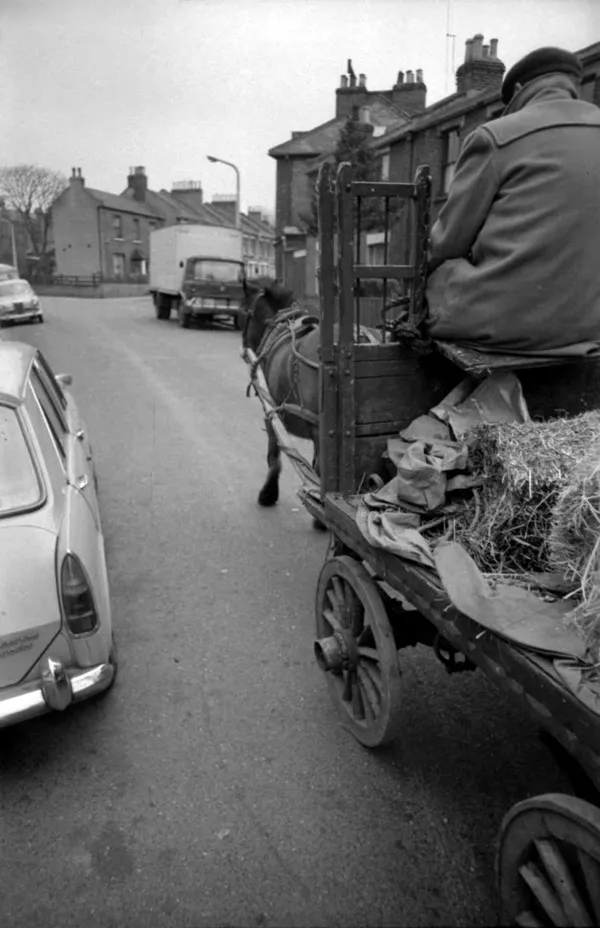
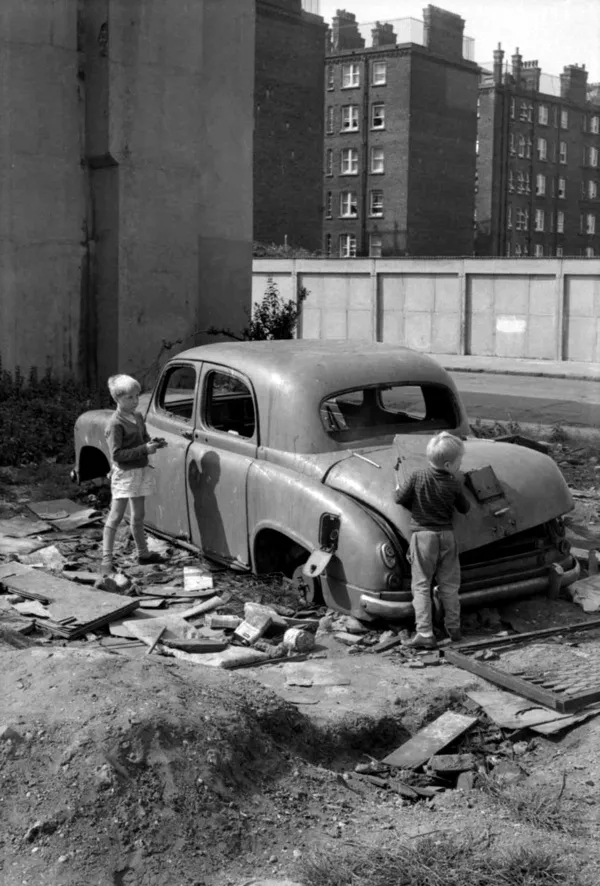
A horse and cart in the 60’s- wow.
LikeLiked by 1 person
Jennie, when I left London in 2012, local scrap dealers were still seen roaming the streets using horses and carts. It’s a cheap option, and no parking tickets! 🙂
Best wishes, Pete.
LikeLiked by 1 person
I can see the advantages! Best to you, Pete.
LikeLiked by 1 person
I remember the rag and bone man round our way using a horse and cart, so that must have been in the mid to late 70’s, but then its grim up North 🙂
LikeLiked by 1 person
They still had them in London before I moved here. Must be grim there too! 🙂
Cheers, Pete.
LikeLiked by 1 person
I find black and white photos dramatic. Thanks for sharing Pete!
LikeLiked by 1 person
They suit this period too, Arlene.
Best wishes, Pete.
LikeLike
I love the little boy wrapped up for the cold weather
LikeLiked by 1 person
He is wearing a ‘Balaclava Helmet, probably hand-knitted. I always had one in the winter, knitted by my mum. This is the history of them.
‘The name comes from their use at the Battle of Balaclava during the Crimean War of 1854, referring to the town near Sevastopol in the Crimea, where British troops there wore knitted headgear to keep warm. Handmade balaclavas were sent over to the British troops to help protect them from the bitter cold weather. British troops required this aid, as their own supplies (warm clothing, weatherproof quarters, and food) never arrived in time. According to Richard Rutt in his History of Handknitting, the name “balaclava helmet” was not used during the war but appears much later, in 1881.’
Best wishes, Pete.
LikeLiked by 1 person
wow! so interesting –
LikeLiked by 1 person
Reblogged this on NEW BLOG HERE >> https:/BOOKS.ESLARN-NET.DE.
LikeLiked by 1 person
It seems that children would always find a way to play outside, regardless of their environment.
LikeLiked by 2 people
Very true, Liz. I played outside on identical streets south of the river a few years earlier. We knew no different.
Best wishes, Pete.
LikeLiked by 1 person
My brother and I were play outside kids, too.
LikeLiked by 1 person
Thanks! We’re the derelict buildings and cars leftover (so long) from the war or just neglect? Like living in a house and next door is condemned? Or just no by really cared because the eyesore wasn’t a bother to the $ set?
LikeLiked by 1 person
Some of the wasteland and a few derelict houses would have been unrepaired war damage. But not the cars, as few people in that area had cars during the war years. The area was generally neglected unti the late 1960s-early 1970s, when local authorities began to clear slums and build new housing. Nobody remotely wealthy lived there then, so it was ‘out of sight, out of mind’, Phil
Best wishes Pete.
LikeLiked by 1 person
The library would be easy to miss. Rather than a branch, it should be called a twig. Warmest regards, Theo
LikeLiked by 2 people
You are right about that, Theo.
Best wishes, Pete.
LikeLiked by 1 person
Brilliant set of images, Pete…social history of its time
LikeLiked by 1 person
Yes indeed. I really liked them.
Best wishes, Pete.
LikeLiked by 1 person
😊
LikeLike
(1) The librarian, Olivia Appia, still has not opened the door to the Roman Road Branch Library door! But I”m not surprised. It’s the Appian way…
(2) “My granddaughter wrote me a letter. She got hired by a specialty shop near the Place Pigalle, but she won’t tell me what she’s selling.
(3) That grand old house is haunted by Gerhardt Gläser. He’s having a hard time abandoning the house that he once fitted with windows.
(4) “That’s not our house. We’re here on vacation from Bermuda.”
(5) “Let’s find a French foreign exchange student, and ask her if she’d like to help us reenact the life of Joan of Arc!”
(6) Those are radioactive onion bulbs.
(7) “I’m the lady-in-waiting. But I’m getting tired of waiting for the queen to give me a call.”
(8) “I’m the lady-still-in-waiting!”
(9) “I’m learning the alphabet with alphabet blocks. Right now, I’m up to Block H.”
(10) “I’m not waiting on the queen any longer. I’m going to march right over there and giver her a piece of my mind!”
(11) “What the hay are you slowin’ down for, Scrappy?”
(12) “I looked inside, but there’s no geocache. Maybe it’s the wrong car?”
LikeLiked by 1 person
You picked something very appropriate for each one, David. Well done. 🙂
Best wishes, Pete.
LikeLiked by 1 person
These are great photos that give us non-Brits a glimpse into UK history….thanx chuq
LikeLiked by 2 people
Yes, it was nothing at like it was portrayed in the films, chuq.
Best wishes, Pete.
LikeLiked by 1 person
Always the pinafore and cardigan and the arms folded against the chill. Those two “old men” were probably not all that old! It’s relative, isn’t it. I used to think 30 was old…very long ago! Wrecked cars were like a magnet to kids. So was Roman Rd so named because of an actual ancient road?
LikeLiked by 1 person
Here is the history, Carolyn. It was/is a famous street market.
‘There is some debate about whether the Romans marched along what is now the Roman Road, which runs more or less parallel to the Roman road which connected London to Colchester. Roman remains were found in an 1845 dig on the current site of Armagh Road, and there have been further Roman finds since, which seems to justify the name. Early maps show a ‘Driftway’, or footpath, where the Roman Road now runs in an area that was rural up to the middle of the 19th century (old maps show a windmill near the present Ford Close). Old Ford is the main road and a toll road links Mile End to Hackney (Grove Road).
The Metropolitan Board of Works, set up in 1855 to provide a sewer system for London, was also responsible for improving roads and this was when the Roman Road, as it was called from the start, was built, on the Driftway, extending Bethnal Green Road and Green Street eastwards. It was paid for by local residents and public and private sources. In the 1870s, there were discussions about extending the Roman Road to Stratford, but this was not to be. In the 1930s, Bethnal Green’s Green Street was merged into the Roman Road – and all the shop and house numbers were changed accordingly.’
Best wishes, Pete.
LikeLike
Wonderful pictures.
LikeLiked by 1 person
Thanks, Molly. I love to see those characters on the streets.
Best wishes, Pete.
LikeLiked by 1 person
I’m quite familiar with the Roman Road, but don’t remember the library. I do remember playing in derelict houses though.
LikeLiked by 1 person
That photo was taken in the mid 1960s. I used to go down there in the late 60s, and i don’t remember that library either. 🙂
Best wishes, Pete.
LikeLiked by 1 person
Strange. I thought I knew that road from top to bottom.
LikeLiked by 1 person